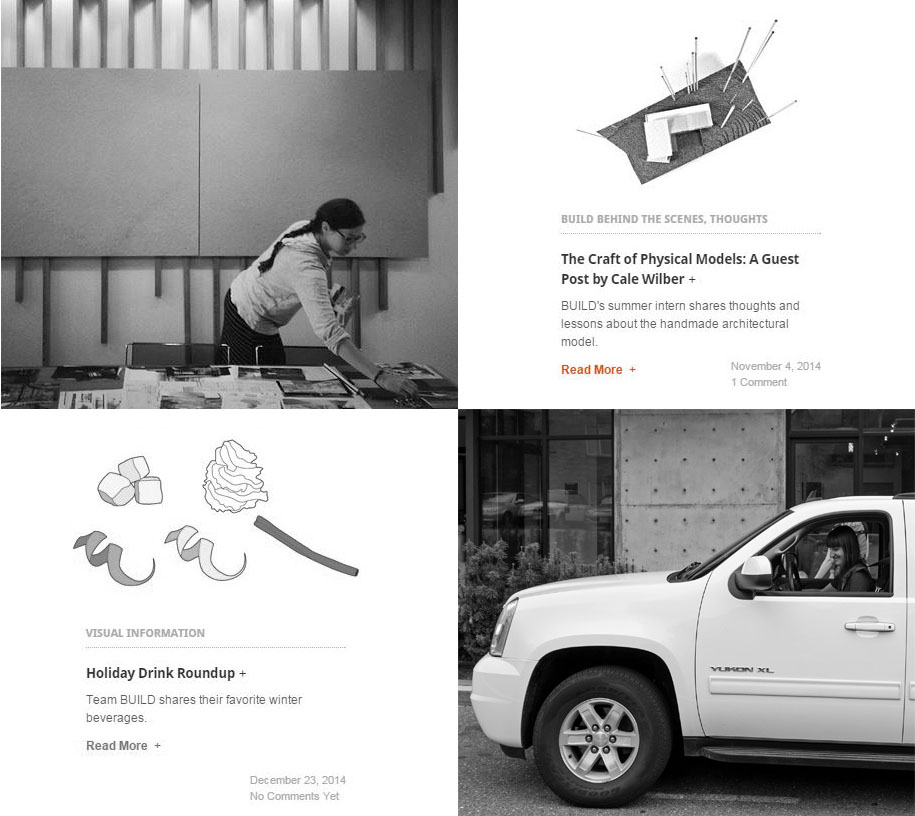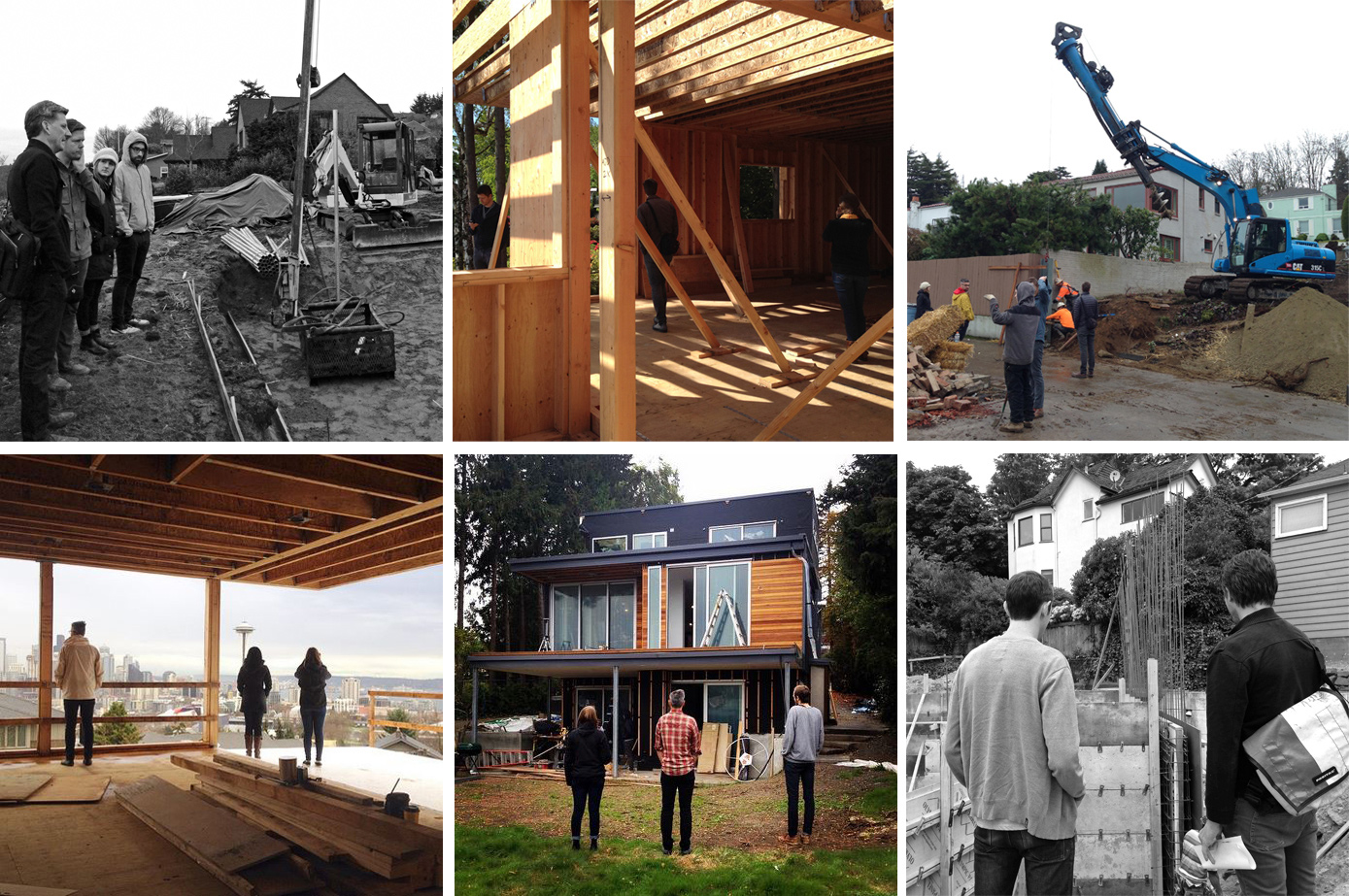
[All images by BUILD LLC]
As an office full of architects, we’ve spent a great deal of time working up the ranks by way of architectural internships. Our experiences were productive, enjoyable, and full of invaluable lessons. Today’s post is a summary of those lessons collected into what could be used as a guide to securing and getting the most out of an architectural internship.*
FILTERING YOUR OPTIONS
1. The early bird gets the worm. It’s no coincidence that this post is launching in March. You need to get an early jump on your competitors. Different schools let out for summer break at different times, and the ones that let out early have a significant advantage over the programs that run longer into the summer months. Build in a bit of time to get those rejection responses out of the way, fine tune your approach, and stick the landing. And don’t forget to have that portfolio and résumé ready to go.
2. Look beyond architecture firms. Graphic design, photography, engineering, and related design fields all have the potential to offer an excellent professional experience. A great engineering firm can teach you volumes more about architecture than an average architecture firm. A summer of construction experience can also provide you with the direct knowledge of how things get built and make you a better designer in the long run. Getting big picture experience also provides the added advantage of diversifying your knowledge base, and setting you apart from your peers. And in the end, the people and values will have a more powerful impact on you than the work itself.
3. To be paid or not to be paid. Not all internships pay, and you’ll want to sort this out sooner rather than later. And if it is a paid internship, find out how much (if not already stated). You’d be amazed how many interns don’t ask, considering this not-so-small detail can often be a deal-breaker for even pursuing a specific internship. And, of course, you can negotiate as an intern … just keep those expectations in check.

SELECTING THE RIGHT FIT
4. Interviewing the firm. The character of the firm you intern for has the ability to set the course for your career. Asking questions during the interview process will help you express the things that are important to you in your professional development and uncover whether there’s a true fit or not. Do all of the interns sit isolated in a windowless model shop? Will you have actual interaction with a design team, principals, etc.? How often do interns get to go on site visits or attend on-site construction meetings? These things matter, and they should be sorted out before you make a commitment.
5. How much structure is right for you?
There’s no right or wrong here. The level of structure in an internship is highly dependent on the size, culture, and process of the firm. But it’s important to know what you want out of your internship experience, and how you work best. If it’s too structured, you may not have the freedom to work on different projects for different teams. Does the firm have a formal internship program? Do interns get to work on a variety of projects? If it’s not structured enough, you may spend more time cleaning the model shop than you bargained for. Does the firm have a project in mind that you’d be starting on? Would you be part of a design team? Size and name recognition play a significant role here, and should be thoughtfully considered. And with the multiple summer and winter breaks at your disposal, it’s a good idea to get a wide range of experiences at various firms.
6. Choose the people over the projects. The company and people you work for will have a profound effect on how you eventually practice architecture professionally and how you perform in the work place. The habits of your employers and mentors set the tone for your own career, the good and bad. Working for a firm exhibiting poor habits or practicing mediocre architecture will be frustrating and discouraging, with the potential to damage your professional trajectory. On the flip side, interning for a firm whose projects excite you and with a team that cultivates a healthy work culture can become a solid launching pad for your career. And in your time there, make an effort to get to know your co-workers and form connections. It makes for enjoyable workdays and increases your chances at being asked back (more on this below). Or, in the very least, you’ll garner a stockpile of glowing letters of recommendation for your next job.

LEVERAGING THE EXPERIENCE
7. Keep your eyes and ears open. The model you’re building is only one of the aspects of the internship experience. Internships offer an invitation behind the curtain to see how a particular firm works firsthand. Make the most of your time by paying close attention and asking a lot of questions. Absorb as much as you can. It’s your chance to learn how clients are treated, tight deadlines are managed, and team dynamics play out day-to-day. These informal lessons will stay with you the rest of your life.
8. Get professional credit. Track your time and get IDP credit for every bit of work you do. Stay on top of the requirements, as it seems to be a moving target in recent years. The various categories of required professional experience should translate into different tasks and a bit of time on the job site — use this to your advantage to round out the internship experience. A good employer should understand the value of diversity in your professional experience.
9. Document, document, document. The value of having professional projects in your portfolio can’t be overstated. Make it a point to document the projects and your role in them for the résumé updates after each internship gig. Don’t be shy asking the firm about the use of photos for your portfolio. We’ve all been there, and we all continue to need photographic documentation of projects.
10. Keep in touch. Checking in at key points during the school year can lead to a few weeks of work around the holidays, and you can sometimes secure the next internship with a simple note or email rather than going through the entire interview process again. As well, each firm you work for becomes part of your professional and personal network. That network can be part of what you earn with your labor, it’d be a shame to waste it.
Cheers and Happy Internship Hunting from Team BUILD
*Quick Disclaimer: This guide is intended for student interns as opposed to graduates who are in their first several years of full-time professional work (often referred to as “architectural interns” until they become licensed).





